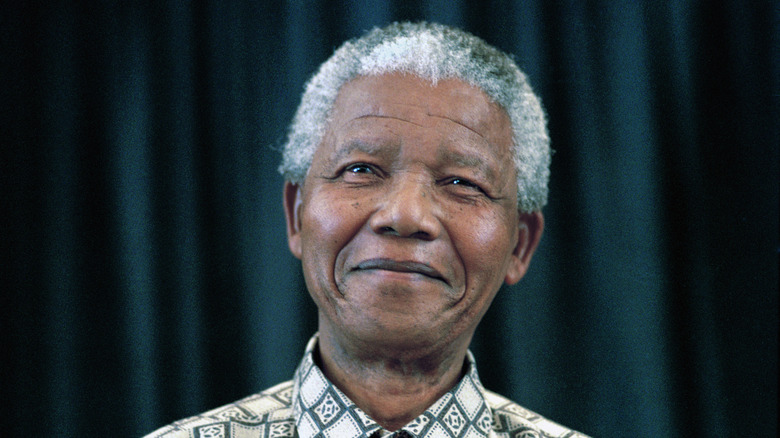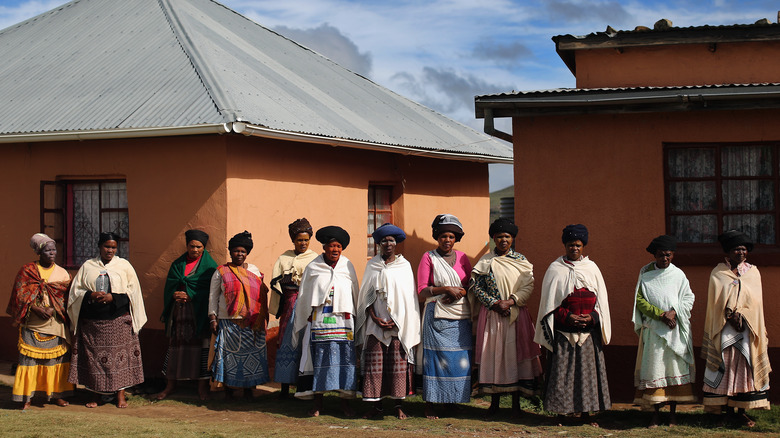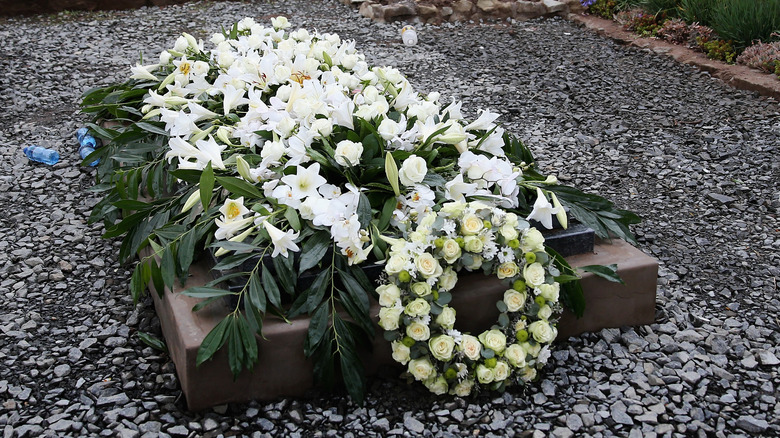Here's Where Nelson Mandela Is Buried
Nelson Mandela had gone from political prisoner to South Africa's first democratically elected president in his long life. But on December 5, 2013, the 95-year-old who helped dismantle the racist apartheid system in his country was struggling to breathe, according to The Guardian. With his wife Graça Machel and ex-wife Winnie Madikizela-Mandela by his side, he died peacefully after an ongoing lung infection that he'd been fighting for two years, per the Los Angeles Times.
Amid worldwide praise for the Nobel Peace Prize winner, his nation held a national mourning period that ended with Mandela's burial where he had grown up — the village of Qunu in the grasslands of the Eastern Cape, per the Associated Press. They lowered his flag-draped coffin into the ground. "Yours was truly a long walk to freedom and now you have achieved the ultimate freedom in the bosom of your maker," Brigadier General Monwabisi Jamangile solemnly intoned during the funeral. "Rest in peace."
Ancestral home
Nelson Rolihlahla Mandela was born into a noble dynasty in the village of Mvezo on July 18, 1918, according to "Nelson Mandela: World Leader for Human Rights." He was the son of Henry Mandela, a chief of the Thembu people, who named him Rolihlahla, which translates to "troublemaker." Mandela grew up in the nearby village of Qunu in the Transkei territory with his mother and siblings. "It is a beautiful country of rolling hills, fertile valleys, and a thousand rivers and streams," Mandela recounted in "Long Walk to Freedom: The Autobiography of Nelson Mandela."
A missionary named him Nelson after he began formal schooling when he was 7. He would eventually go from tending livestock to attending law school and become politically active in fighting South Africa's white minority ruling system, per the Nelson Mandela Foundation. He spent 27 years in prison and eventually helped negotiate the end of apartheid before becoming South Africa's president in 1994.
Homecoming
Nelson Mandela, in his autobiography, described Qunu as being in a "narrow, grassy valley, crisscrossed by clear streams, and overlooked by green hills" inhabited by "a few hundred people" who lived in mud huts. On Saturday, December 14, 2013, the small village welcomed Mandela home, per the Associated Press. The route from the airport was packed with mourners who watched as the long procession of military vehicles and the hearse carrying Mandela's body drove into the village while a helicopter flew overhead. They held his funeral the next day, capping off a nearly two-week period of mourning, including a memorial in Johannesburg attended by many world leaders, per the AP.
Mandela's family and friends — 450 in total — gathered that day in Qunu to bury him amid songs, remembrances, and a 21-gun salute, according to The Guardian. His final resting place is in a garden of aloe and stone under a marble slab bearing his name, birth and death dates, clan name, and the words "rest in peace."


